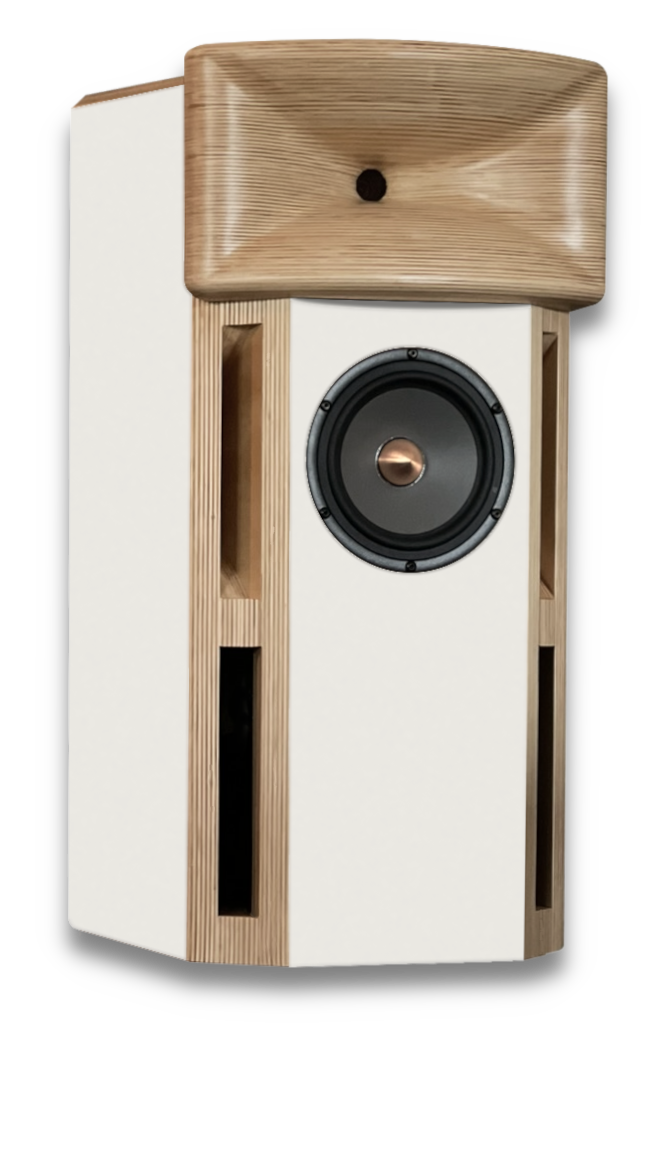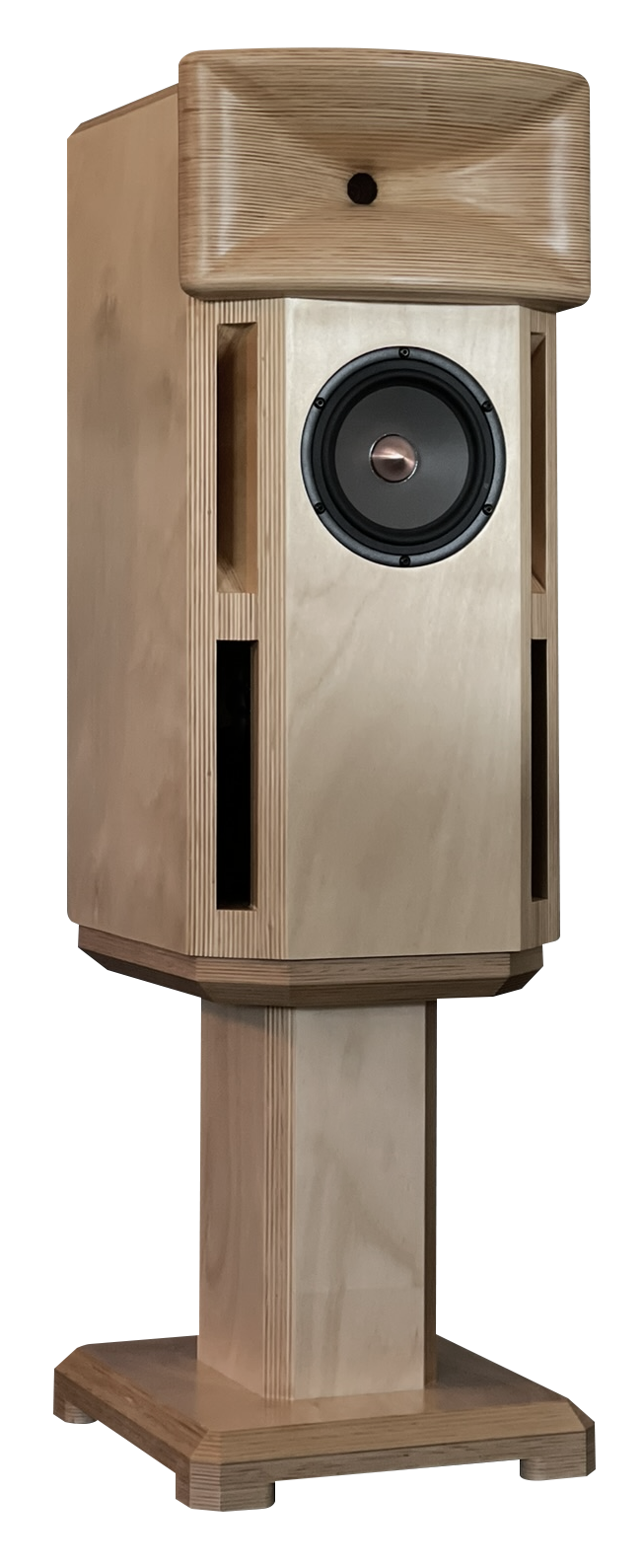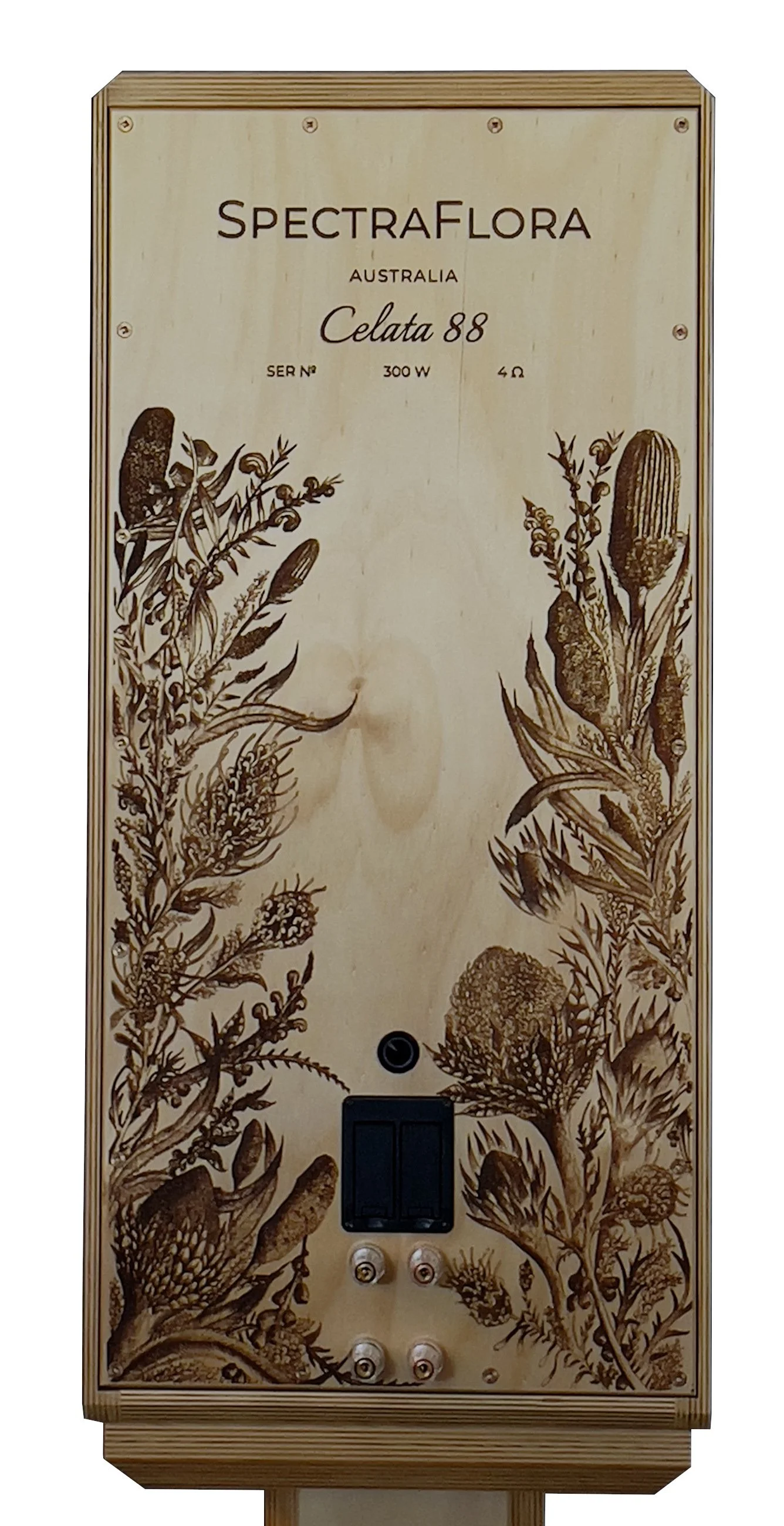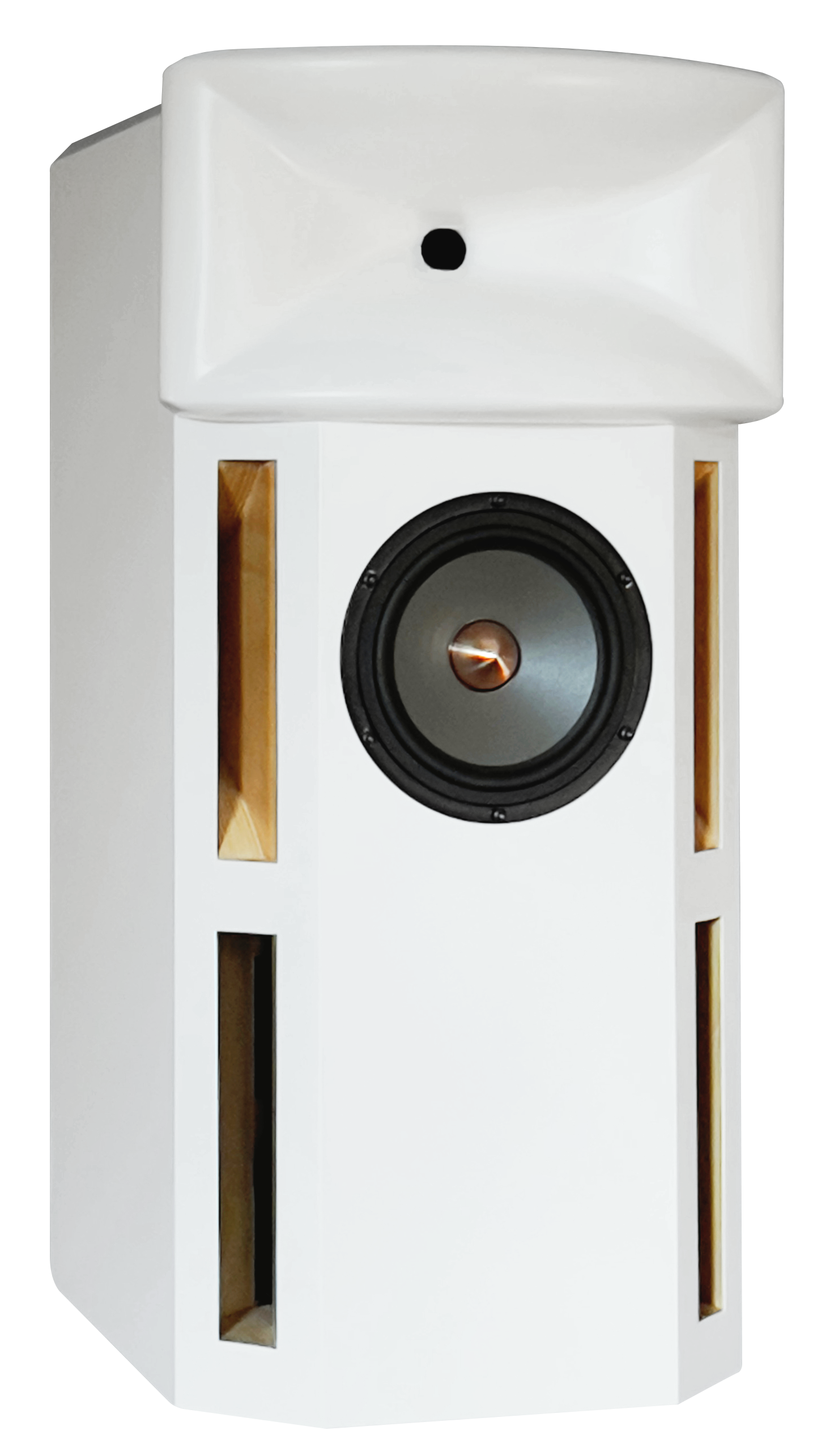Celata 88
“... the Celata 88s cabinets are woodworking masterpieces … we cannot remember when we last heard similarly sized speakers capable of delivering such low frequencies … The articulation of the compression driver means that all the frequencies within its compass are delivered with jaw dropping precision, not to mention crisply, cleanly and without a hint of the ‘sizzle’ that can tarnish the treble delivery of conventional tweeters.”
Greg Borrowman - Reviewer, Audio Esoterica
Our flagship, the 3-way standmount Celata 88, takes an uncompromising approach to the expression of emotion and meaning through music. The result of 4 years of R&D, it combines cutting-edge technology with timeless design elements. Like all SpectraFlora products, they are made from responsibly sourced Australian timber from Australian native species.
Celata: 1) Latin, referring to being hidden, for example, Italian knights were hidden behind Celata helmets with slots for vision. 2) Grevillea celata, a rare plant species native to Victoria that is often hidden among other similar species.
Acoustic design features of the Celata 88 include the Dynamic Waveguide, Celata internal subwoofer system, and graphene coated magnesium midbass. Incorporated through a cutting-edge crossover circuit, they deliver natural, emotionally gripping sound.
Celata 88 Features
3-way, stand-mount passive speakers. By using a passive design, you can be sure that the speakers will not become obsolete as amplifier and connectivity technologies improve.
Made from responsibly sourced Australian timber species grown and processed or reclaimed and recycled in Australia.
Finishing options fall into three categories: popular, which we can always make or have on hand; limited, which are designs we’ve created to showcase timber with limited availability; custom—designs by you or your interior designer in consultation with us.
The patent pending Dynamic Waveguide design combines a cutting-edge waveguide profile in the horizontal dimension with a traditional horn profile in the vertical dimension. The result is the dynamics and intimate sound of a horn, but without horn honk colouration, combined with transparency and even horizontal sound distribution. That means instrumental and vocal timbres stay true from wall reflections even in reverberant rooms.
The graphene coated magnesium mid-bass driver remains pistonic across its range. It is critically damped in its own sealed enclosure so it doesn’t overshoot or ring. The result is crystal clear, lifelike vocals and instruments.
The patent pending Celata subwoofer design uses two horizontally opposed 8-inch subwoofers that are slot-loaded in a push-pull configuration to minimise cabinet vibration, overshoot and ringing. The result is exceptionally clean, crisp bass that is integrated perfectly with the mid-bass driver and Dynamic Waveguide, as opposed to using separate subwoofers that are virtually impossible to perfectly integrate with speakers.
The crossover is 18 V DC biased by two 9 V batteries to avoid distortion effects from capacitors. The components are the best we could find in the world based on 11 months of listening tests. For example, custom foil capacitors for the high and mid frequency circuits, copper foil for the high, and aluminium foil bypass capacitors for the mid. The result is very transparent sound—listen to music, not crossover artefacts. The crossover topology between the mid-bass and Dynamic Waveguide is quasi-transient perfect, meaning that phase is linear through the crossover region and the tweeter and mid-bass are perfectly time aligned, instead of the typical approach in which the midrange lags the tweeter in time. The subjective results of the time aligned Dynamic Waveguide and mid-bass are sharp, realistic transients which contribute to natural, engaging vocals and instruments.
The button on the back provides a treble boost designed to benefit listeners with hearing loss, particularly age-related, at high frequencies.
Matching speaker stands are available.







Technical specifications
Dimensions including the Dynamic Waveguide: 353 mm x 717 mm x 448 mm, WxHxD
Weight: 46 kg each
Impedance: nominal 4 ohms, minimum 3.7 ohms at 38 Hz
Frequency range: 33 Hz (-3 dB) to 20 kHz
Sensitivity: 86 dB (1 m, 2.83 V)
Maximum power: 300 W peak, meaning very brief transients; equivalent to 35 V at 4 ohms. This results in a very high SPL, ~108 dB at 1 m from a single speaker, which is not recommended for the sake of your ears.
Crossover points: 130 Hz and 1300 Hz
Drivers: two 8-inch subwoofers; 7-inch mid-bass, graphene coated magnesium cone; 1-inch compression driver with oversized, 52 mm voice coil and mineral loaded ketone polymer diaphragm.
Dual, gold-plated, solid-copper binding posts. The top pair drives the Dynamic Waveguide and mid-bass; the bottom pair drives the subwoofers. This can be changed on request so that the top pair only drives the Dynamic Waveguide.
2 x 9 V batteries are replaceable from the back of the speaker without tools. They require replacement at the end of the shelf-life of the batteries; 5 years for normal alkaline smoke detector batteries.
Recommended amplifiers: >40 W tube; >70 W solid state class A or A/B. More power is better. Class D is suitalble for driving the subwoofers and some high-end class D amplifiers might be suitable for all drivers. For bi-amping, 20 W tube is sufficient for driving the Dynamic Waveguide alone and could possibly drive the mid-bass, also, depending on the amplifier. The minimum impedance of the Dynamic Waveguide + mid-bass is 4.4 ohm at 220 Hz. The minimum impedance of the Dynamic Waveguide by itself is 8 ohm.
